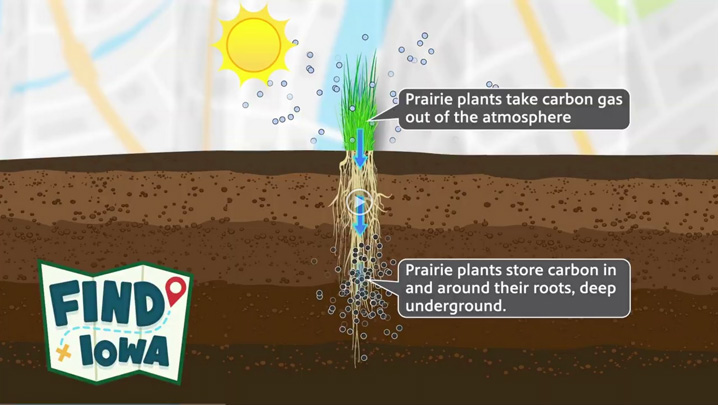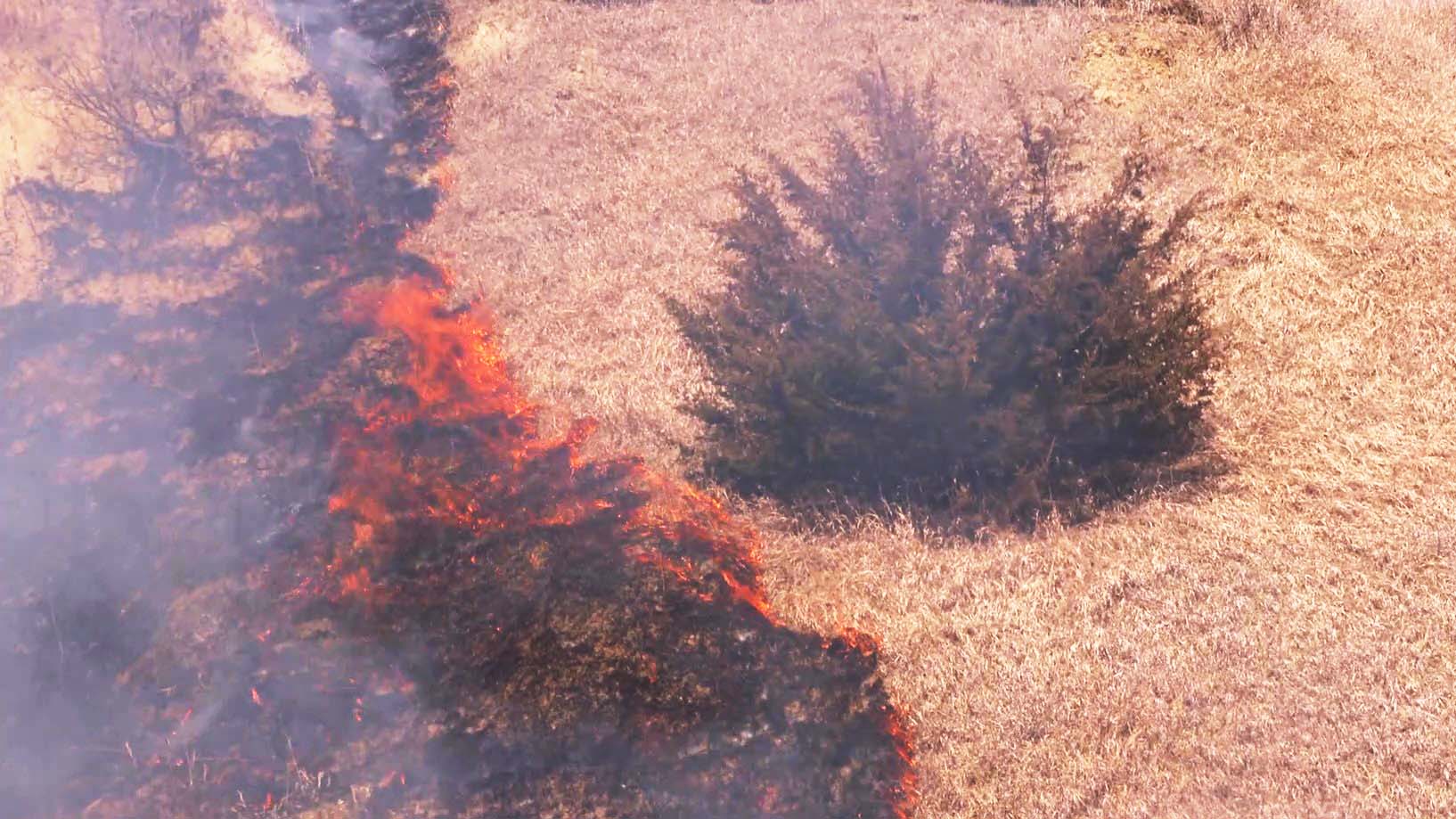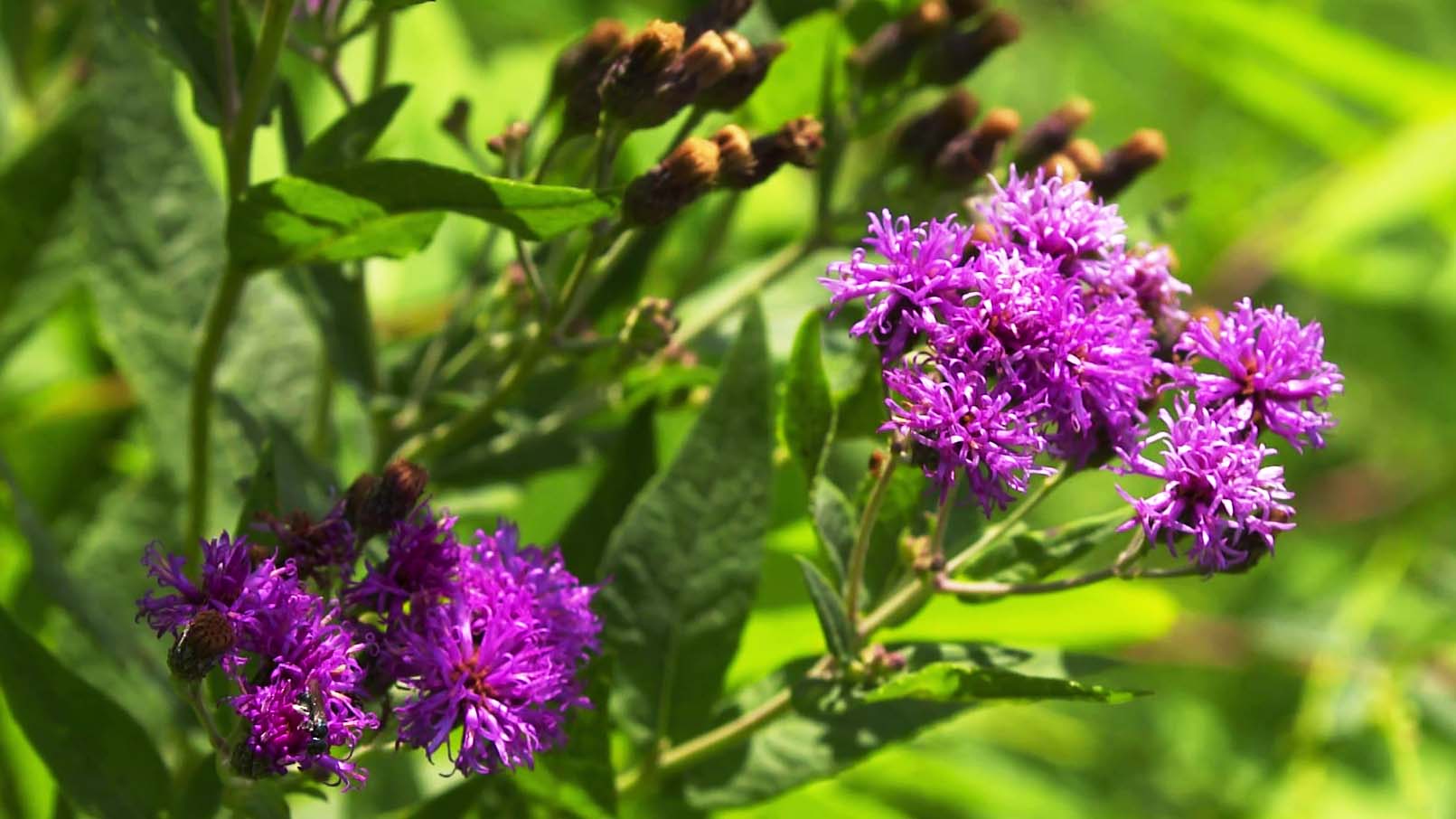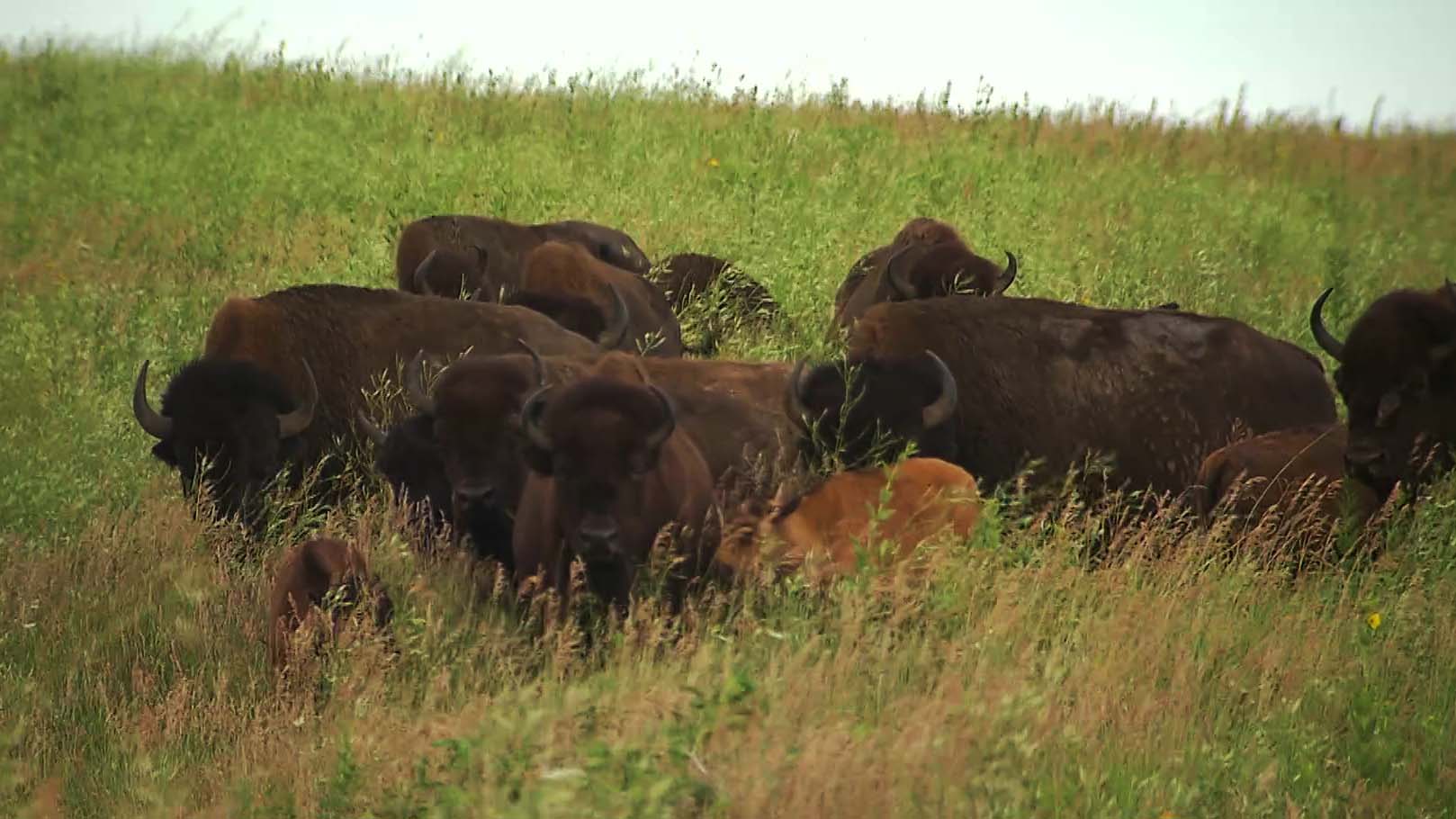Prairie Conservation
Iowa was once 95% covered with prairies, but today just a fraction of those remain. Scientists, like naturalists and biologists, are working to preserve remnant prairies and to reconstruct prairies in some areas where they were lost or destroyed.

Reconstructed and Remnant Prairies
Remnant prairies are rare in Iowa, but there are some significant efforts to reconstruct prairies in Iowa.

Prairies and the Environment
Plants like trees and prairie plants pull carbon from the air and store it, but prairie plants are able to store carbon in their roots, which protects them from surface threats like tornadoes and fires.

Biological Carbon Sequestration
Carbon sequestration is when carbon is pulled out of the air and stored. Trees and prairies both do this, but trees store most of the carbon above ground, while prairies store most of it below ground in their roots.

Prairie Burns
Controlled prairie burns are done to help control the species of plants in a prairie.

Preserving Prairie Land
Naturalists and biologists work to protect and preserve prairies. However, volunteers, farmers, families and even you can play a role in prairie preservation.

The Bison Factor
Let's learn how bison are involved in the prairie reconstruction process at Neal Smith Wildlife Refuge.





